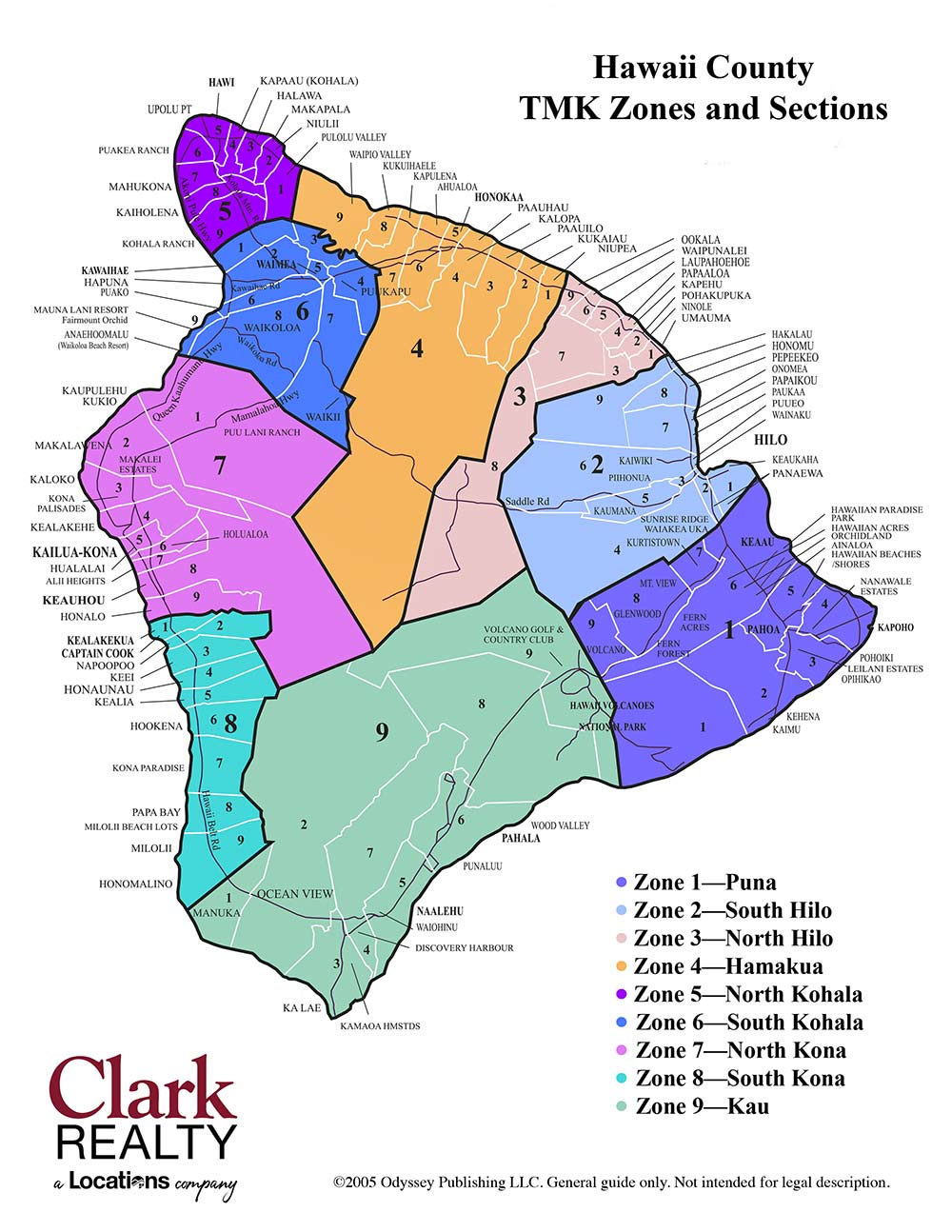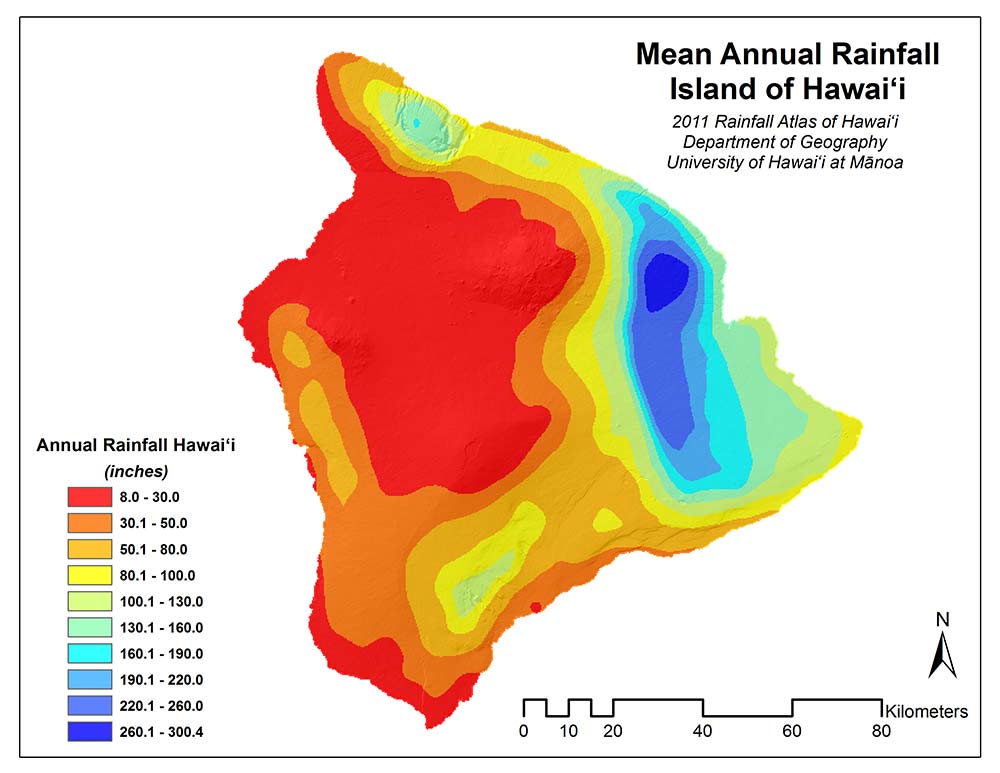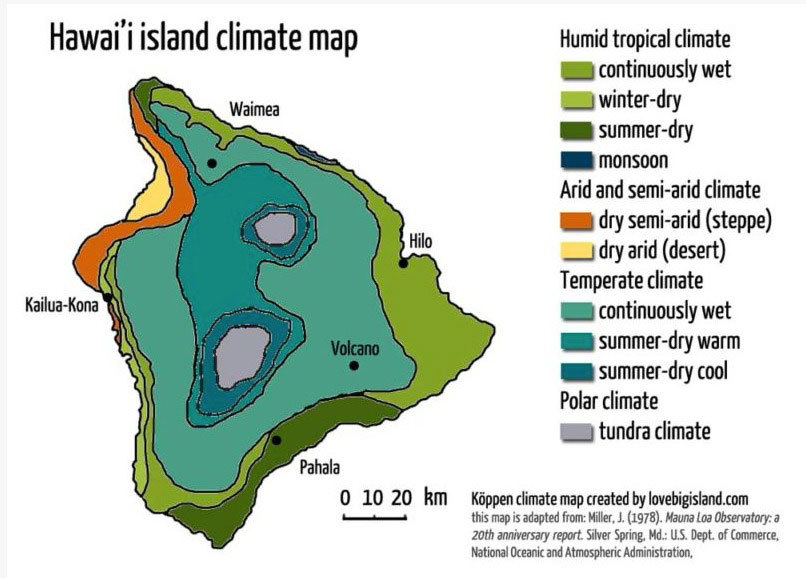TMK Zones & Sections
Click on the TMK Zones map to see a larger version
Of all the maps available, the TMK map, in my opinion, is the most useful in understand the Big Island. As you can see, there are nine districts, with small towns not only dotting the coast, but mauka as well. The full TMK number is included on all MLS listings and this helps you to understand where the property is located. The first number will be a “3” which notes that it is the Big Island. Then the Zone number comes next (1 – 9), then comes the smaller number you see on the map with is the section within the district. Not noted on this map, but part of the TMK will be the plat, parcel and CPR (Condominium Property Regime, if relevant.) So, a typical TMK for Paauilo looks like this:
3-4-4-(Island number, zone number, plat number)-(parcel number)-(Plus parcel number for the specific property, and CPR number, if relevant)
Lava hazard zone
Click on the Lava Hazard Zone map to see a larger version
mean annual rainfall
Click on the Rainfall map to view a larger version
Giambelluca, T.W., Q. Chen, A.G. Frazier, J.P. Price, Y.-L. Chen, P.-S. Chu, J.K. Eischeid, and D.M. Delparte, 2013: Online Rainfall Atlas of Hawai‘i. Bull. Amer. Meteor. Soc. 94, 313-316, doi: 10.1175/BAMS-D-11-00228.1
hawaii island climate map
Click on the Climate map to view a larger version
(Hawaii Island Climate Map courtesy LoveBigIsland.com)
This map shows you the micro-climates and where they are on the Big Island. Our island has the majority of all micro-climates worldwide, providing so many options when it comes to setting down your roots. One must decide if they are fine with mild or heavy trade winds, super dry or wet conditions, fog, etc. It is always best to visit an area prior to purchasing your home or land. Be sure you are comfortable with all this area has to offer in the area of climate as well as amenities.





